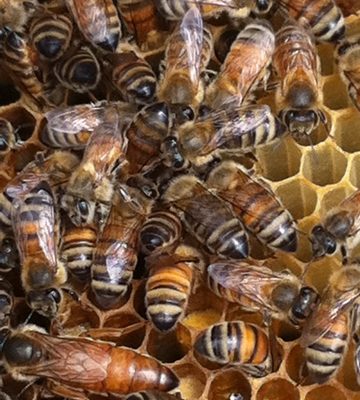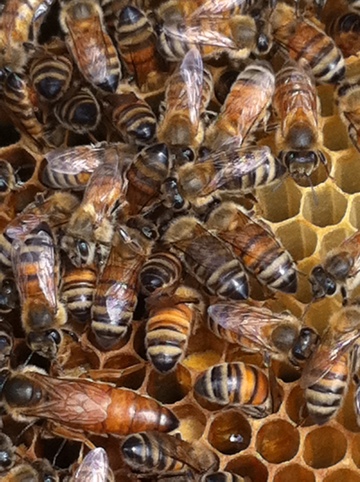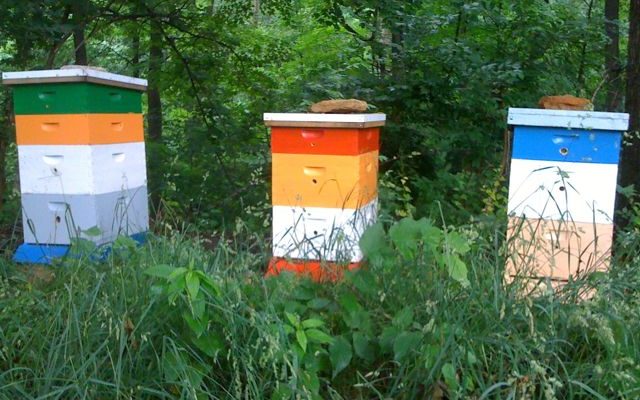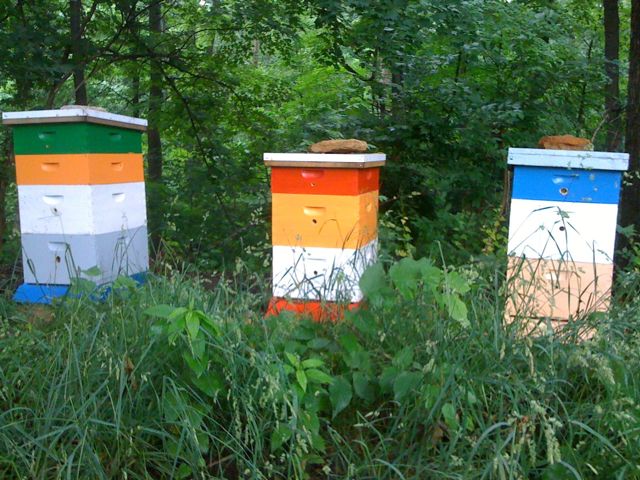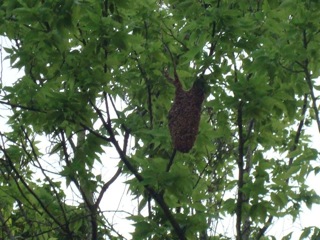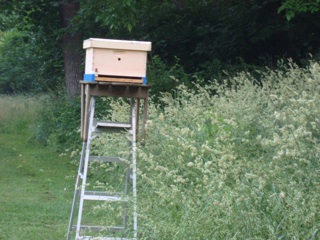When I got home from work yesterday, I lit the smoker, changed my clothes, and headed out to the beeyard. (I say “beeyard,” but it’s not really a separate yard, it’s simply the space where I keep the bees at the edge of the wood behind our house. I just like to say “beeyard.”) I removed the bottom 10-frame deep box because it’s a ghost town in there. The bees had not yet moved into it. There were maybe a couple of cells of stored pollen in the entire box, no eggs, no other activity, so off it went.
Then, I placed an 8-frame medium box on top of my apiary’s last remaining 10-frame deep…the one that houses my awesomely surviving Amazons and their wonderfully gorgeous queen. I replaced the top cover, and that was that. No more disturbance.
Speaking of beeyards…I think I’ve lined up an 80-acre place within a 30-minute drive of my house where I can keep a lot of bees. My friend, Michael, who is building a home on a part of the acreage, has agreed to let me keep bees there; in exchange I’ll teach him what I know about beekeeping. I’ll give him his own hives to work. So, that’s totally cool, isn’t it? If I collect any swarms or if any of my future cut-out attempts succeed, those bees will go to Michael’s place.
Yesterday, too, I ordered veils, hive tools, a smoker, and a copy of The Complete Idiot’s Guide to Beekeeping for each of my bee stewards. They don’t know about their bee-steward package yet, and I think they’ll like it.
I’m thinking of naming my future honey “Amazon Honey” and my own personal future queens “Amazon Queens.” Perfect.

